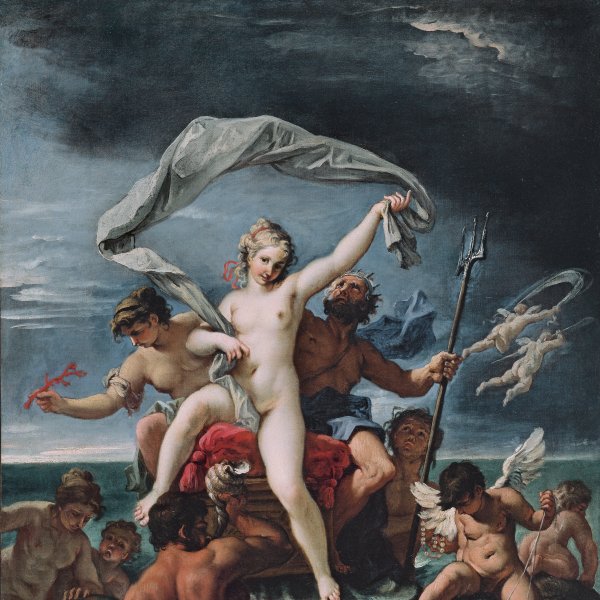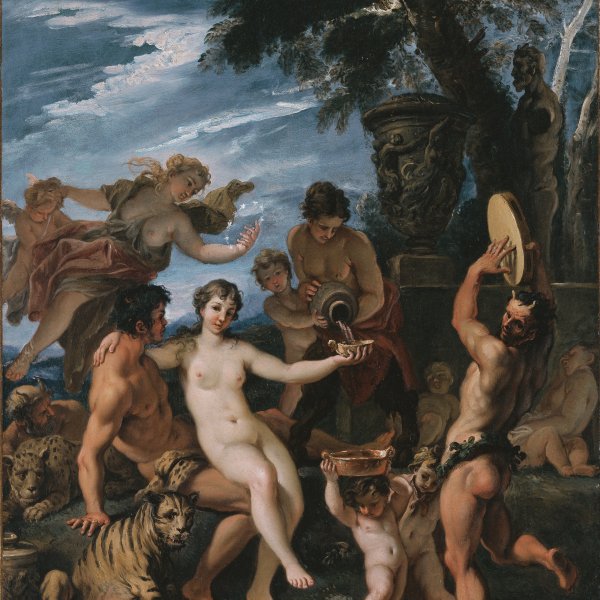Sebastiano Ricci
Belluno, 1659-Venice, 1734
Ricci was born in Belluno and moved to Venice at the age of fourteen to become a pupil of Federico Cervelli. He left Venice for Bologna for personal reasons and entered the studio of Giovanni Gioseffo dal Sole then worked with Carlo Cignani. Ricci’s early works reveal the influence of the tenebrist painters and an interest in chiaroscuro. He later travelled to Parma where he worked for Ranuccio Farnese, second Duke of Parma, on projects that included the decoration of the Palazzo Farnese in that city. With the support of the Duke he was able to travel to Rome to complete his training. There Ricci became acquainted with the work of Annibale Carracci and Pietro da Cortona, which had a crucial influence on the development of his style, along with that of Veronese, Magnasco and Luca Giordano. Ricci painted The Glory of Marcantonio Colonna for the Colonna family palace. A tireless traveller, he also visited Milan and Padua. In 1702 he moved to Vienna to work on the decoration of the Schönbrunn palace and at this date Ricci’s style became more elegant and delicate. He was also active in Florence, in the Marucelli-Fenzi palace, where is work reveals the influence of the Rococo. On his return to Venice, Ricci worked for some months with his nephew Marco Ricci. In 1712 both artists were invited to England by Lord Burlington. Once there, they also worked for the Duke of Portland, executing a series of New Testament scenes, of which various preparatory oil sketches are now in the National Gallery of Art, Washington, and The Metropolitan Museum of Art, New York. On his way back to Italy, Ricci visited Paris where he was admitted to the Académie Royale de Peinture. He met Jean-Antoine Watteau and other young French painters. Ricci later returned to Venice and continued to work for a variety of clients including the house of Savoy, for whom he painted The Expulsion of Hagar (Galleria Sabauda, Turin). Ricci died in Venice in 1734.






